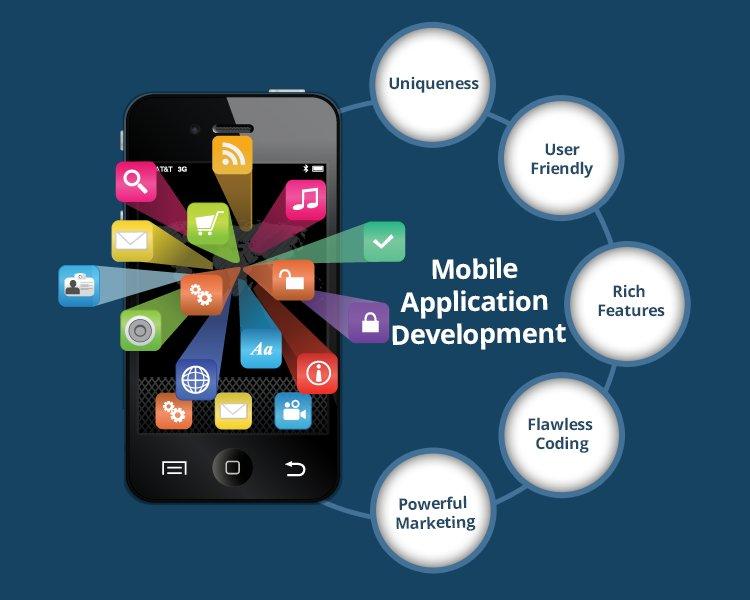In a time when technology is becoming more integral, it is hardly surprising that eCommerce has transformed into an essential element of our everyday routines. Considering the rising prevalence of mobile devices, Progressive Web Apps (PWAs) have gained prominence as a noteworthy solution, attracting considerable interest from businesses looking to enhance their online existence.
The distinctive capability of PWAs to deliver a seamless user experience across various platforms has positioned them as a remarkable tool for enterprises seeking to stand out in the digital crowd and engage with their customers more meaningfully.
What do you mean by Progressive Web Application?
A Progressive Web Application (PWA) is a multi-functional web application meant for seamless operation as both a web page and a mobile app across diverse devices. PWAs offer a compelling solution to enhance user experience and boost conversion rates, particularly in situations with poor mobile connectivity. They simulate conventional web pages but possess functionality akin to native mobile apps. They provide speed, offline functionality, push notifications, and utilize device features.
Although defining PWAs precisely can be challenging due to their flexible nature, Google, the originator, characterizes them as reliable, fast, and engaging, emphasizing their ability to load quickly in varying network conditions, respond promptly to user interactions with smooth animations, and deliver an immersive user experience.
To create a typical PWA in eCommerce, you require three essential components:
1. HTTPS
PWAs must be delivered through secure and trusted connections, utilizing HTTPS to ensure data security.
2. Service Worker
A background script responsible for managing network requests and enabling PWAs to function swiftly and offline, among other functionalities.
3. Web App Manifest
PWAs depend on a web app manifest, a JSON file containing information about the PWA’s appearance and behavior. This file includes details like colors, icons, names, descriptions, and more, shaping the PWA’s user experience.
Key features of eCommerce Progressive Web Apps (PWAs) include
The main characteristics of PWAs are as follows
1. Swift Loading
In the realm of eCommerce, customers are inclined to abandon sluggish websites in favor of competitors. PWAs use service workers to cache crucial data, ensuring speedy loading times, even in less-than-ideal network conditions.
2. Responsive Design
PWAs for eCommerce boast responsive and progressive designs, making them adaptable to various screen sizes and orientations, guaranteeing a consistent and user-friendly experience.
3. Push Notifications
PWAs empower businesses to send push notifications to users, offering them valuable updates on special offers, sales, and important information. This feature enhances customer engagement and conversion rates.
4. Offline Functionality
PWAs excel in offline capability, enabling users to access content and features even without an internet connection, which is particularly advantageous in eCommerce.
5. Improved SEO
PWAs contribute to enhanced search engine optimization through their rapid loading times and exceptional user experience. This enhances your website’s search engine rankings and attracts more users.
Why does PWA work for e-commerce?
Progressive Web Apps in eCommerce have proven to be highly effective in the realm of eCommerce for several compelling reasons. Traditional responsive web design, while accommodating mobile screens, often falls short of providing the advanced features that modern users expect. This disparity, often referred to as the ‘m-commerce gap,’ can hinder conversions and sales. Closing this gap and enhancing the mobile shopping experience is paramount.
Attempting to make purchases on such websites can become time-consuming and less intuitive. The absence of advanced eCommerce features, such as autofill and saved payment details, can make mobile shopping cumbersome.
In contrast, PWAs bridge this gap effectively. They offer a superior user experience compared to traditional responsive websites. PWAs are not only more accessible but also don’t require users to leave their web browsers. Despite their initially limited capabilities, advanced web applications, including PWAs, have emerged as the top choice for eCommerce, delivering a seamless and feature-rich shopping experience for mobile users.
Advantages of Progressive Web Application
Progressive Web Applications (PWAs) have revolutionized web development, offering a range of significant advantages. Let’s delve into the various benefits they provide:
1. Swift Market Entry
PWAs are a rapid gateway to the mobile world. They are developed using standard web technologies and can be deployed within a few months. PWAs work seamlessly across all devices, eliminating the need for separate iOS and Android apps.
2. Comprehensive Functionality
Unlike the traditional approach of building separate websites and native apps, PWAs enable the creation of a single application that operates smoothly on any device. Depending on browser capabilities, PWAs by custom web development companies progressively enhance their features to mimic native apps.
3. Cost Efficiency
PWAs consolidate development efforts and reduce costs. Rather than building separate iOS, Android, and website entities, a single PWA suffices. PWAs don’t require presence in app stores, saving on associated fees.
4. Lower Customer Acquisition Cost (CAC)
PWAs allow users to install the app directly from their mobile browser, avoiding the need to visit app stores. This streamlined approach increases the likelihood of user adoption. PWAs don’t require manual updates, further lowering CAC.
5. Headless Commerce
PWAs leverage a headless architecture, enhancing flexibility and enabling the separation of the front end from the backend e-commerce platform. This empowers marketing teams to make changes independently.
6. Enhanced SEO
PWAs expedite the indexing process on Google due to their standard web page URLs. Server Side Rendering (SSR) enhances indexing, which is crucial for large eCommerce stores. Faster, responsive apps receive higher search engine rankings and lower bounce rates.
7. Reduced Bounce Rate
PWAs load rapidly, even in poor network conditions, mitigating the issue of users abandoning slow-loading sites. They work offline, allowing continued browsing without an internet connection, thus retaining potential sales. You can also go for PWA Company USA to create a reliable website for your business.
8. Increased Engagement, Mobile Conversions, and Revenue
PWAs bridge the gap between mobile and desktop conversions. Their full-screen capabilities and easy access options, like “Add to Home Screen,” boost user engagement. Push notifications, once limited to native apps, further enhance user re-engagement.
PWA development solution helps elevate mobile-first commerce, enhance user experience, and drive revenue growth in the digital landscape.
Specific requirements to set up Progressive Web Apps (PWAs)
Below are the three main requirements to set up progressive web apps.
1. Secure Connection (HTTPS)
When deploying a Progressive Web App (PWA), it holds significant importance to ensure that your server is secured by establishing an HTTPS connection. This step plays a pivotal role in fortifying your server’s defense, rendering an extra layer of safeguarding for your PWA.
2. Service Workers
Service workers are fundamental to PWA technology. They dictate how network requests are handled. A service worker is a client-side JavaScript file integrated into your codebase, operating in the background to emulate app-like functionalities.
3. PWA Manifest File
Creating a PWA requires a simple JSON file known as the PWA manifest file. This file furnishes the browser with details about your PWA’s appearance and behavior once it’s installed on a user’s mobile device. It includes information like the app’s name, icons, and colors, and is designed to enhance the native app-like experience.
Cost of Developing a Progressive Web Application
For a complex PWA with advanced features, development from scratch can take between 6 to 12 months, with costs ranging from 50,000 USD to 150,000 USD or more. However, you can explore pre-made PWA solutions by hiring a progressive web app developer, which can significantly reduce both development time and costs.
For a precise estimate of development time and costs, it’s advisable to consult with a progressive web app development company.
To implement PWA for your business, you need to ensure that your website is progressive, meaning it adapts to various screen sizes and operating systems. PWA requires offline accessibility, achieved through Service Workers, which are JavaScript files managing offline access. When you hire PWA developers, you don’t have to worry about managing it.
PWAs offer benefits such as faster loading times, no need for frequent downloads or updates, offline functionality, and push notifications for direct communication with customers, enhancing their experience and increasing engagement and revenue for businesses.
PWA implementation comes with technical complexities, including integration and testing with third-party services. It’s crucial to work with an experienced development team in PWA development for e-commerce website development.
Here are some notable PWA examples
1. Pinterest
Pinterest’s PWA provides a fast, interactive experience, offering offline mode, push notifications, and smooth checkout processes for users to discover and save ideas.
2. Starbucks
Starbucks’ PWA allows users to order and pay for drinks online and pick them up hassle-free from nearby stores. It includes features like location services, real-time updates, and personalized offers.
3. Forbes
Forbes’ PWA ensures a reliable, fast-loading experience, providing mobile access to its content. That is why hiring a progressive web app company for this task seems much more reliable.
4. Twitter
Twitter’s PWA, known as Twitter Lite, offers a lightweight, fast-loading version of the platform, allowing users to access Twitter without downloading a native mobile app.
Conclusion
In conclusion, embracing PWA in your eCommerce strategy can help you stay competitive, enhance the user experience, reduce bounce rates, and increase engagement. While numerous eCommerce businesses have enthusiastically embraced PWAs, some remain cautious about the transition, apprehensive that it might not align perfectly with their specific needs.
Although change may seem daunting, when implemented correctly, PWAs can be a valuable addition to your business. Web developing companies can assist in implementing PWA for your store based on their pre-made PWA solution.




